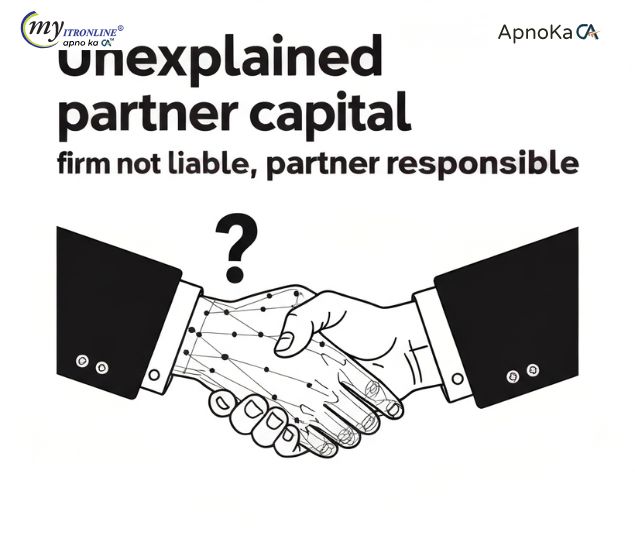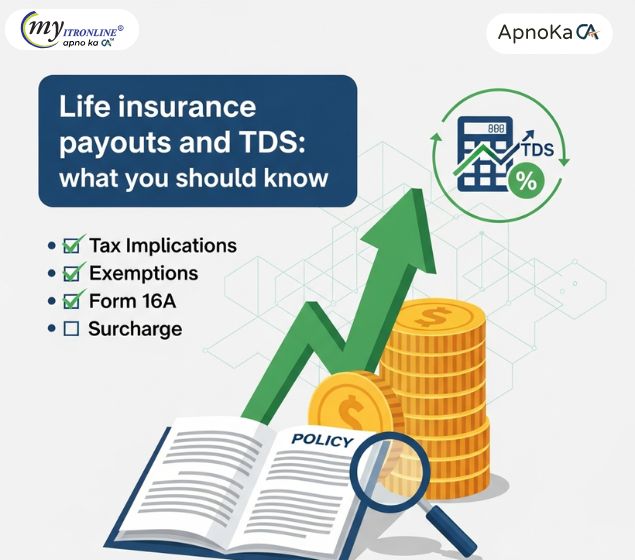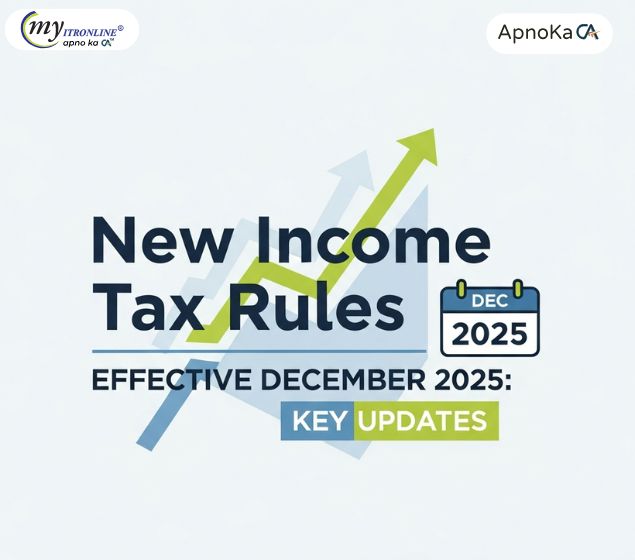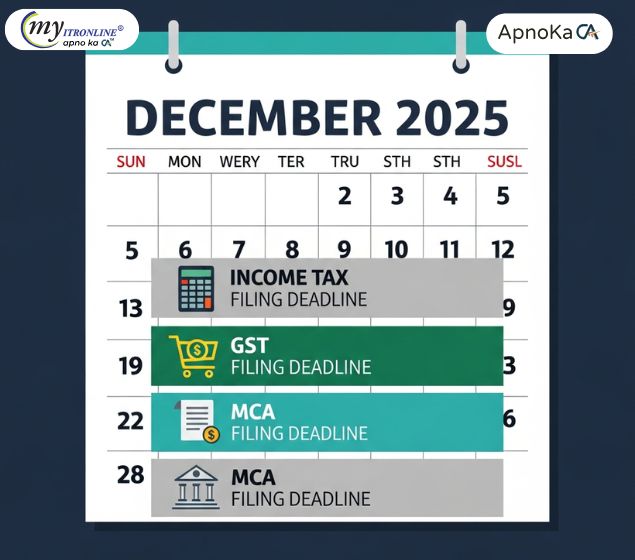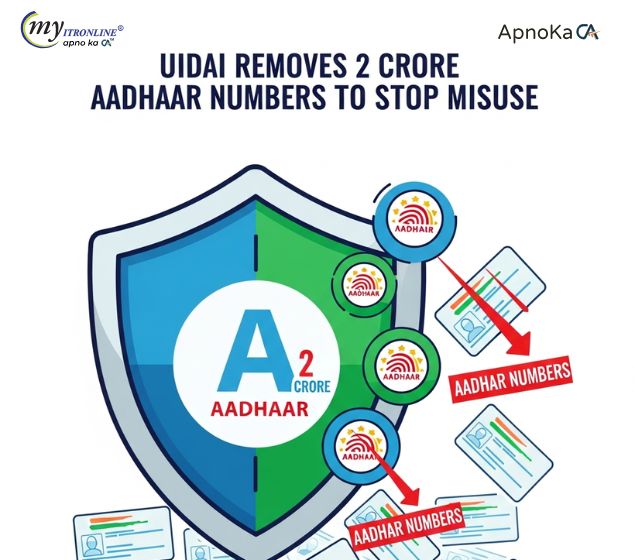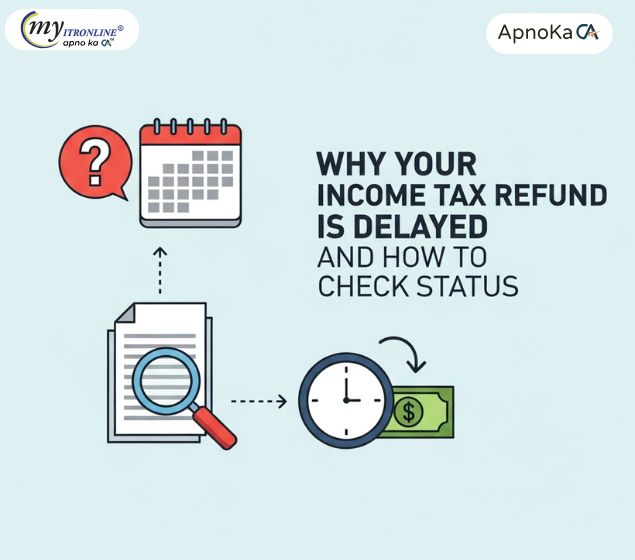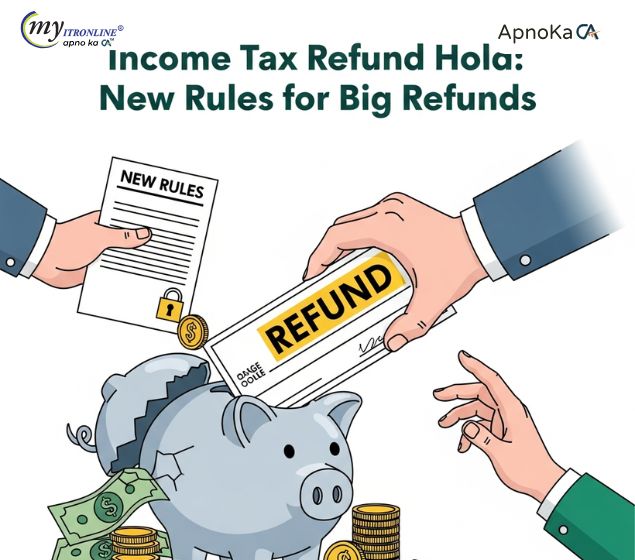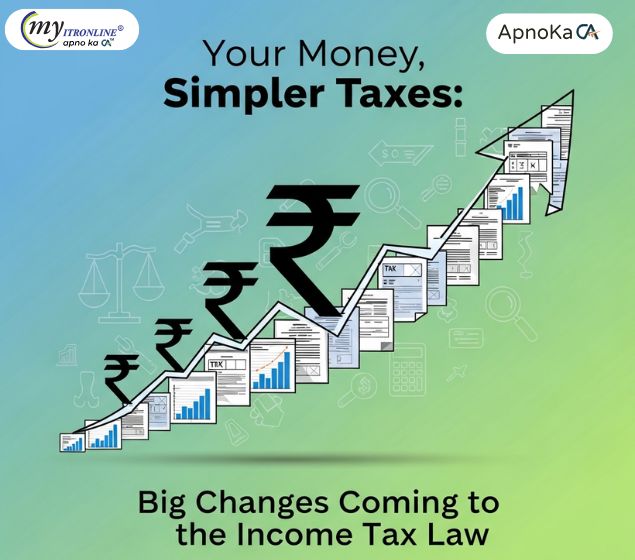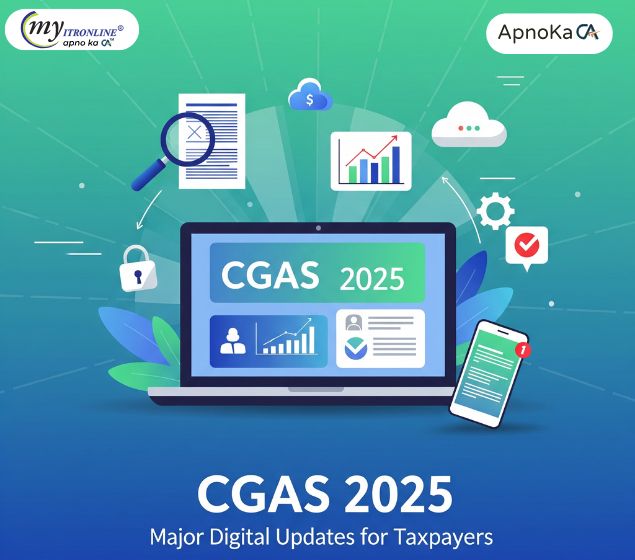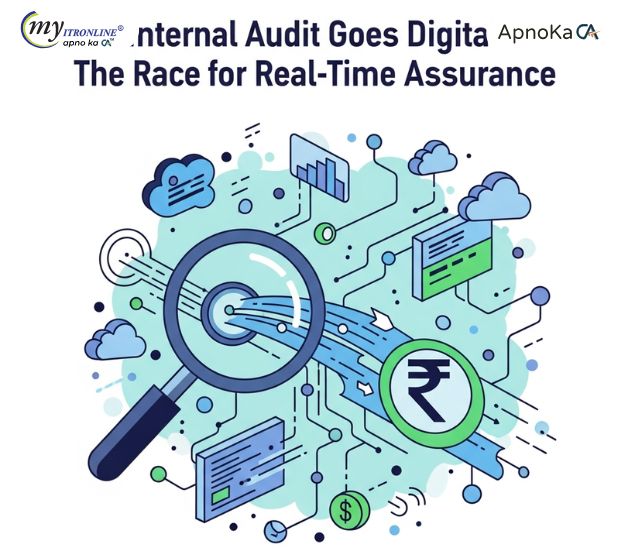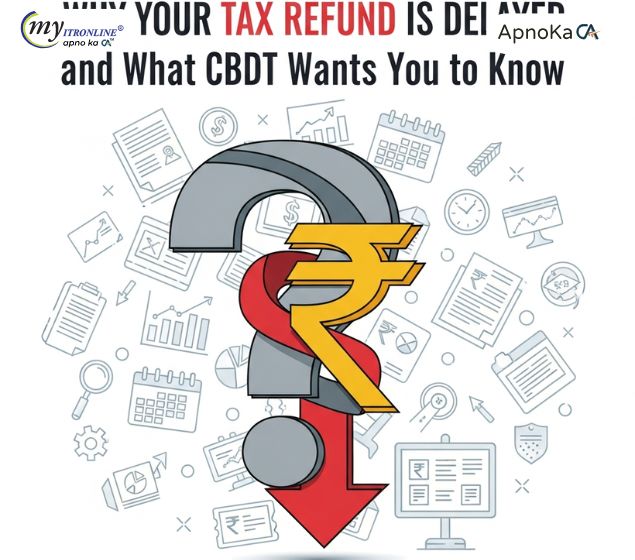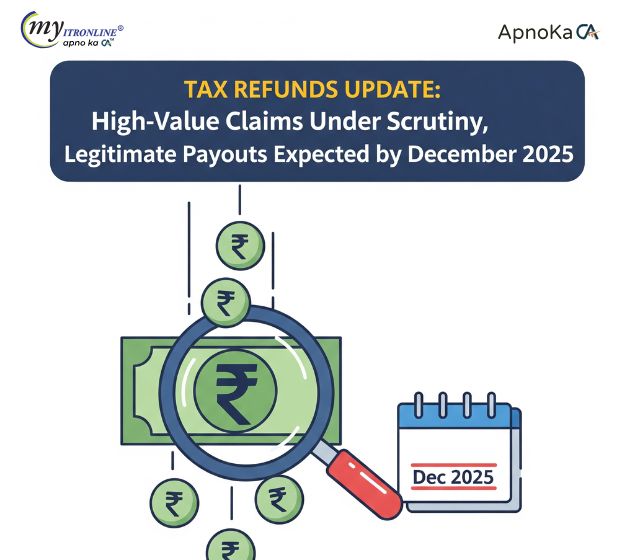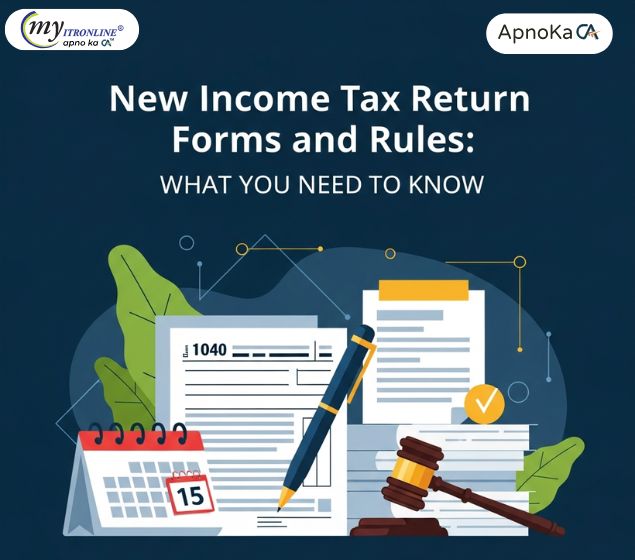FY 2025-26 Depreciation Rates & Rules Under Income Tax Act: A Business Guide
A comprehensive guide for businesses on the depreciation rates and rules applicable for the Financial Year 2025-26 under the Indian Income Tax Act. The blog details the core principles, including the 'Block of Assets' concept and the WDV method. It provides a clear breakdown of depreciation rates for various asset classes like buildings, machinery, and intangible assets. Furthermore, it covers crucial special provisions such as additional depreciation for manufacturing units, rules for the sale of assets, and recent updates like the non-depreciable status of goodwill, empowering businesses with the knowledge for effective tax planning and compliance.
.jpg )
For any business, big or small, understanding depreciation is more than an accounting task; it's an essential part of tax planning. It enables companies to recover the cost of tangible and intangible assets over their useful life, which reduces taxable income and improves cash flow. As we approach Financial Year 2025-26 (Assessment Year 2026-27), businesses need to grasp the current depreciation rates and rules under the Income Tax Act, 1961.
While the main principles and rates of depreciation usually remain stable unless the Union Budget or CBDT issues specific amendments, an active understanding helps ensure compliance and maximizes tax benefits. This detailed guide will cover the key elements of depreciation for the upcoming financial year.
What is Depreciation? (A Quick Recap)
In simple terms, depreciation is the systematic allocation of the cost of a tangible or intangible asset over its useful life. Assets such as machinery, buildings, furniture, vehicles, patents, or software lose value over time due to wear and tear, obsolescence, or usage. Depreciation shows this decline in value on a company's financial statements.
From a tax perspective, depreciation is a non-cash expense that can be deducted from a business's gross income. This deduction lowers taxable profit, which in turn reduces the overall tax liability.
Key Principles of Depreciation under the Income Tax Act
Unlike accounting depreciation, which can use different methods like the Straight Line Method or Written Down Value, the Income Tax Act outlines a specific framework:
Example: All plant and machinery with a 15% depreciation rate will form one block.
- Mandatory Deduction: Depreciation is a mandatory deduction. Even if a taxpayer does not claim it, it is assumed to have been allowed.
- Block of Assets Concept: This is a key aspect. Assets are grouped into "blocks" based on their nature and the uniform rate of depreciation that applies to them. Depreciation is computed on the entire block of assets rather than on individual assets.
- Written Down Value (WDV) Method: For most assets, the Income Tax Act requires the WDV method. Under this method, depreciation is calculated on the opening WDV of the block plus any additions made during the year, minus any assets sold from the block. The WDV decreases each year, which also reduces the depreciation amount, even though the rate stays the same.
- Actual Cost: Depreciation is allowed on the 'actual cost' of the asset. This generally includes the purchase price plus any direct expenses needed to prepare the asset for use, like installation or freight.
- Ownership and Use: The taxpayer must own the asset (either wholly or partly) and use it for business purposes during the relevant previous year.
- Half-Rate Depreciation: If an asset is acquired and used for less than 180 days in the previous year, only 50% of the usual depreciation rate is allowed for that year. The remaining depreciation can be claimed in future years.
- No Depreciation on Land: Land cannot be depreciated since its value is usually considered non-depreciable.
Depreciation Rates for FY 2025-26 (AY 2026-27)
The depreciation rates are mainly listed in Schedule II of the Income Tax Rules, 1962. These rates have remained fairly consistent in recent years. Unless there are changes in upcoming budgets or notifications, the following rates are expected to apply for FY 2025-26:
A. Buildings (Excluding the cost of land)
- 5%: Buildings used mainly for residential purposes (excluding hotels and boarding houses).
- 10%: Buildings used mainly for non-residential purposes, like offices, factories, godowns, hotels, and boarding houses.
- 10%: Temporary structures (e.g., wooden structures).
B. Furniture & Fittings
- 10%: All types of furniture and fittings, including electrical fittings.
C. Plant & Machinery
This category is quite diverse.
- 15%: General plant and machinery (the default rate for items not specified elsewhere).
- 30%: Motor cars, except those used in a business of renting them out, acquired or used on or after April 1, 1990.
- 40%:
- Computers, including computer software.
- Plant and machinery used in specific production activities (e.g., manufacture of rubber and plastic goods, glass, cement).
- Machinery and plant, except those used in a business of running them on hire, acquired between August 23, 2019, and April 1, 2020, and put to use before April 1, 2020 (this was a temporary enhanced rate).
- 80%:
- Energy-saving devices.
- Renewable energy devices (e.g., solar, wind energy systems).
- Pollution control equipment.
- Books (except those owned by taxpayers running lending libraries).
- 100%: Books owned by taxpayers running lending libraries.
D. Intangible Assets
- 25%: Know-how, patents, copyrights, trademarks, licenses, franchises, or other similar business rights.
Specific Rules & Considerations for FY 2025-26
Additional Depreciation (Section 32(1)(iia))
- This is a vital benefit for manufacturing and power generation units.
- An extra depreciation of 20% is allowed on the actual cost of new plant and machinery (excluding ships, aircraft, office appliances, road transport vehicles, and previously used assets).
- This is in addition to the normal depreciation.
- Half-Rate Rule: If new P&M eligible for additional depreciation is used for less than 180 days, only 50% (i.e., 10%) of the additional depreciation is allowed that year. The remaining 10% can be claimed in the next tax year.
Goodwill of a Business or Profession
Recent Update: As per a key Supreme Court ruling and subsequent clarifications, goodwill of a business or profession is no longer seen as a depreciable asset for income tax from Assessment Year 2021-22 (i.e., FY 2020-21) onward. This is an important change to keep in mind.
Sale of Depreciable Assets
- When an asset from a block is sold, the sale proceeds decrease the WDV of that block.
- If the sale proceeds exceed the WDV of the entire block, the excess is treated as a short-term capital gain.
- If the entire block of assets is sold in the year, and the sale proceeds are less than the WDV, the difference is allowed as terminal depreciation (a short-term capital loss).
Impact on Business and Tax Planning
- Reduced Tax Liability: By claiming depreciation, businesses can directly lower their net taxable income, leading to reduced income tax payments.
- Improved Cash Flow: Since depreciation is a non-cash expense, no actual cash leaves the business. Tax savings from depreciation effectively increase available cash.
- Encourages Investment: Provisions like additional depreciation motivate businesses, especially in manufacturing, to invest in new plant and machinery, boosting economic activity.
- Realistic Financial Reporting: While the Income Tax Act has specific rules, depreciation helps businesses show a more accurate picture of their asset values over time.
Important Caveats & Recommendations
- Subject to Change: While the rates and rules usually stay the same, they can change with future Union Budgets, Finance Acts, or CBDT notifications. Always check the latest official information.
- Detailed Record Keeping: Keeping accurate asset registers, details of acquisition costs, dates of putting into use, and block-wise WDV is essential for proper depreciation calculation and auditing.
- Professional Advice: Tax law can be complex. It's wise to consult a qualified tax advisor or chartered accountant for tailored guidance for your business.
Conclusion
Depreciation is a powerful tool for tax planning that every business should use effectively. For Financial Year 2025-26, understanding the Block of Assets, WDV method, specific rates, and special provisions like additional depreciation is crucial for optimizing your tax position. By staying informed and keeping detailed records, businesses can ensure compliance, unlock significant tax benefits, and enhance their financial health.
FILING YOUR INCOME TAX RETURN F.Y 2024-25 (A.Y. 2025-2026) WITH MYITRONLINE
The income tax filing deadline is right around the corner. If you haven’t filed yet, do it today with Myitronline! Avoid last minute rush and file your tax return today on MYITRONLINE in Just 5 mins.(www.myitronline.com)
If you are looking for eCA assistance to file your income tax return/ GST, you can opt for MYITRONLINE eCA assisted plan starting
Upload Salary Individual Form-16
If you have any questions with filing your tax return, please reply to this mail. info@myitronline.com OR call 9971055886,8130309886.
Note-All the aforementioned information in the article is taken from authentic resources and has been published after moderation. Any change in the information other than fact must be believed as a human error. For queries mail us at marketing@myitronline.com
Krishna Gopal Varshney
An editor at apnokacaKrishna Gopal Varshney, Founder & CEO of Myitronline Global Services Private Limited at Delhi. A dedicated and tireless Expert Service Provider for the clients seeking tax filing assistance and all other essential requirements associated with Business/Professional establishment. Connect to us and let us give the Best Support to make you a Success. Visit our website for latest Business News and IT Updates.
Leave a reply
Your email address will not be published. Required fields are marked *Share this article
Krishna Gopal Varshney, Founder & CEO of Myitronline Global Services Private Limited at Delhi. A dedicated and tireless Expert Service Provider for the clients seeking tax filing assistance and all other essential requirements associated with Business/Professional establishment. Connect to us and let us give the Best Support to make you a Success. Visit our website for latest Business News and IT Updates.
View articles








